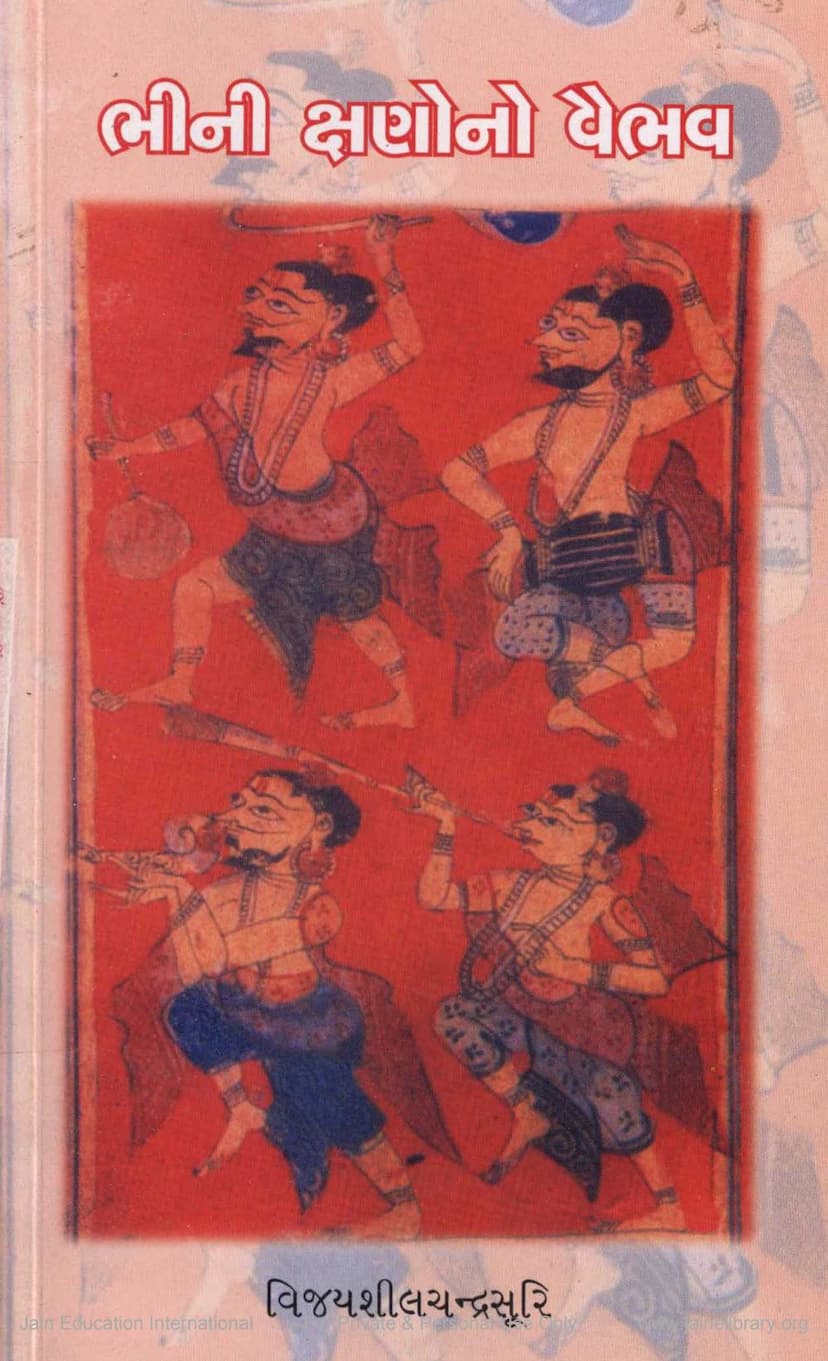Bhini Kshanono Vaibhav
Added to library: September 1, 2025

Summary
This document is a collection of devotional songs and praises (Stavans/Geetikas) dedicated to various Tirthankaras (Jain spiritual leaders), compiled and published by Shri Bhadrankaroday Shikshan Trust, Godhra. The book is titled "Bhini Kshanono Vaibhav" (The Glory of Tender Moments) and is authored by Vijayshilchandrasuri.
Here's a breakdown of the content and themes:
-
Author and Publisher: The book is attributed to Acharya Vijayshilchandrasuri and published by Shri Bhadrankaroday Shikshan Trust, Godhra, in 2006 (Vikram Samvat 2062).
-
Content: The primary content consists of devotional poems (Stavans) in Gujarati, each praising a specific Tirthankara. These poems express the author's deep devotion, humility, and longing for spiritual liberation.
-
Themes and Prayers:
- Renunciation and Detachment: Many poems reflect a weariness with the cycle of birth and death (Bhavsagar) and a desire to renounce worldly attachments. Phrases like "થાક્યો હું ભવ ભટકી" (I am tired of wandering through lives) and "છાંડી ભવ-ભરમાર" (leaving the illusion of the world) are common.
- Seeking Divine Grace: The author repeatedly seeks the grace, guidance, and protection of the Tirthankaras. Prayers for liberation from karma ("કર્મ-ભરમ સબ ટાર"), overcoming negative emotions ("રીસ, પ્રીત અરુ મત્સર-લોભા"), and attaining spiritual knowledge are central.
- Humility and Self-Reflection: The poems often express a sense of humility and acknowledge the author's shortcomings and sins. Phrases like "હું પામર" (I am a sinner), "દીન અભાગી અધમ હું સેવક" (I am an unfortunate, fallen servant), and introspection on past actions are present.
- Devotion to Tirthankaras: Each Tirthankara is addressed with reverence, highlighting their unique virtues and powers. The specific Tirthankaras praised include Rishabh, Ajitnath, Sambhavnath, Abhinandan, Sumatinath, Padmaprabh, Suparshvanath, Chandraprabh, Suvidhinath, Shitalnath, Shreyansnath, Vasupujya, Vimalnath, Anantnath, Dharmanath, Shantinath, Kunthunath, Aranath, Mallinath, Munisuvrat, Naminath, Neminath, Parshvanath, and Vardhaman.
- Spiritual Aspirations: The ultimate goal expressed is achieving spiritual liberation (Moksha or Nirvana) and realizing the true self (Atman). This is often referred to as reaching the "shiva-gam" (abode of liberation) or achieving "nirvana."
- Pilgrimage: The poem dedicated to "Ujjayant Girnar" (a sacred Jain pilgrimage site) provides a detailed description of the pilgrimage, its temples, and the spiritual significance of the mountain.
-
Structure: The book is organized into sections, each typically beginning with a descriptive title (e.g., "Pashchadb," "Prabesh," "Chaachna," "Dakavo," "Namamahaya") followed by one or more devotional songs dedicated to a Tirthankara. The latter part of the book also includes longer "Jain Geetikahs" (Jain songs) in Sanskrit, dedicated to specific Tirthankaras, and a "Kalash Geeti" (Concluding Song).
-
Language and Style: The language is primarily Gujarati, with a poetic and devotional style. The poems are set to traditional melodies, indicated by the names of ragas in parentheses (e.g., "Bhairav," "Nat Bhairav," "Alaiyo Bilawal").
In essence, "Bhini Kshanono Vaibhav" is a devotional work that serves as a guide for spiritual reflection and a means to connect with the teachings and virtues of the Jain Tirthankaras, encouraging the reader towards a path of righteousness and liberation.